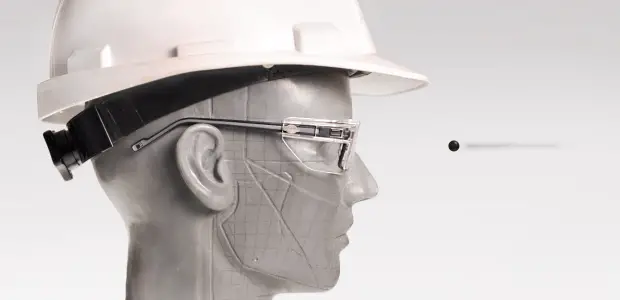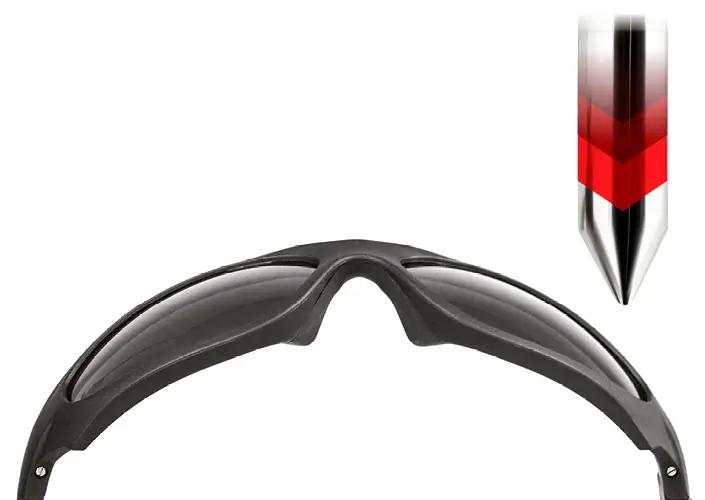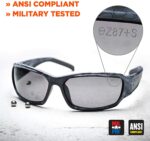Eye injuries are not a silly matter. They take up a good part of the accidents reported in worksites every year. Hence, prevention of these from happening is considered to be very vital for a worker.
And that is why safety glasses are considered to be of utmost importance for a worker or anyone who is to indulge in heavy industrial activities. But how safe are they? How can one know if they are good enough? And most importantly, how are they tested?
I am going to answer all these questions and even more in this blog. Care to venture? Then do read on…
Safety glasses are tested based on American National Standards Institute (ANSI) standards. They are examined to test their strength, ability to withstand impacts, corrosion, durability, and other significant factors.
Procedures such as high impact test or drop ball test are the major test methods used. Moreover, safety eyewear is made to undergo different kinds of tests based on their purpose or utility.

Why are safety glasses tested?
Testing safety glasses are essential for there are various factors that decide the quality of this important equipment.
Safety glasses are not just for ensuring unhindered vision but also to protect the organ from any sort of impact or any dangerous materials from hitting the delicate part.
Moreover, they are also supposed to have a long life and should not wear out easily like normal eyeglasses.
As they are used in sites that involve objects and workers may have to face situations that are quite dangerous, safety glasses ought to be strong and have good coverage.
They need to withstand harsh impacts, splashes of chemicals, vapors, fumes, molten metal, or mists. And this is not limited to just industrial works but can also come in handy during house works too.
As consumers can be easily taken advantage of with low-quality products, it’s vital that the safety glasses made by different brands undergo tests that make them worthy enough to be sold in and bought by customers like you and me.
Testing each quality of safety glasses takes time and effort. Authorities that decide the standards of safety equipment have developed certain tests that these protective eye wares are made to go through before reaching the market.
Who decides the standards of safety glasses?
The Occupational Safety and Health Administration (OSHA) has adopted the safety standards prescribed by American National Standards Institute (ANSI) for eye wares.
And this just does not limit itself to safety glasses but covers everything that protects the face of a worker during his job.
The testing standard for eyewear is ANSI Z87.1. This testing procedure clearly details the processes that are to be used to check the quality of safety glasses.
Test prescribed by ANSI for safety glasses
Before getting into the types of safety tests, let’s briefly touch upon the two kinds of safety glasses:
Safety glasses come in two types: Prescription and non-prescription safety glasses.
The sole purpose of non-prescription safety glasses is to give a protective shield over the eyes. They do not provide aid in helping the user with his vision.
They are mere protective layers. Hence, this type of safety glass is strongly crafted and comes with an anti-scratch lens.
Prescription safety glasses are made for a particular person based on his vision needs. Hence the name. Apart from giving protection to the eyes, prescription safety glasses help enhance vision for users with poor eyesight.
Due to this reason, these are chosen by a person only after the recommendation of a doctor.
Due to this reason, prescription safety glasses need to pass certain specific standards to be called truly “safe”.
So what are the tests?
There are a few ways in which safety goggles are tested. In some cases, they are tested as separate parts. This means the frames and the lens are to undergo different procedures to be certified safe. This is because they are not made of the same material and have different purposes.
Let’s see the most common tests there are:
High Mass Impact Test
A steel projectile weighing 17.6 ounces is used for this test. As it is high impact, it is put to test as one complete piece. The glasses are placed on a dummy head which is put on the floor directly 50 inches below the projectile.

Coming with a considerable weight of 500gms the projectile when dropped hits the glasses with enough impact. The entire unit should remain intact post this to pass the test.
The ones that are not strong enough can break apart into separate pieces.
According to the rules, prescription safety goggles that do not meet the high impact standard must come with labels stating the same.
Drop Ball Impact Test
Here, the same machine is used but along with an ANSI Z87.1 1 inch steel ball. This ball is kept at a distance of 50 inches from the goggles. Upon a touch of a button, it drops and hits the eyewear revealing the result.
More than the intensity of the hit, it is the speed that is tested here. And hence, the particular procedure is also called a ‘high-velocity test’.
Safety glasses that are built strong will not break even when hit by an object that gets shot from a distance. Given below is a video that shows how the same test gives different results for various kinds of eyewear including safety goggles.
These are the two most used test methods. Apart from these some other commonly conducted tests such as:
A corrosion resistance test is done by exposing the glasses to a corrosive atmosphere. When passed, the glasses can be considered safe from hydration, rusting, or oxidation.
Anti-inflammation tests are extremely necessary for goggles that are used especially in industries that involve heat procedures.
For activities like welding, you need to have good protection over the eyes for a spark or a drop of a splash of molten metal can cost you your precious eyesight.
Eye Coverage and field of view test to see how much of the face comes under the protective shield. If a considerable area is not covered then the glasses will be deemed to fail.
A penetration test is another important type. This is done only for lenses. Sharp objects can break and dig into the lens if not made of robust material.
The result of such a situation can be quite tragic. Hence penetration test is a must for checking lens quality.
Along with these a few other criteria that are tested are:
-
-
- Optical power
- Haze test
- Minimum lens thickness
- Luminous Transmission
- Ignition
-
How can I know my safety glasses are approved for use?
Check for certain signs given below before you choose your eye safety equipment:
Prescription safety glasses: Inscription Z87-2 on the temples or at the front.
Non-prescription safety glasses: Markings Z87 (basic impact) or Z87+ (high impact) on either side of the frame or at the front.
These signs are based on the established ANSI standards. If you are able to find these, then you can go for those goggles without a second thought.
For you to know:
‘+’ – indicates that the eyewear can withstand high impact.
‘V’- indicates that the lens is photochromic.
‘S’ – indicates that the lens has a tint. Tint densities are often seen for those lenses that come as part of eyewear that is used for welding operations and other similar works like brazing, soldering, and cutting.
Typically the tint densities vary between 1.5 to 3.0 for moderately shaded glasses (used for soldering) and between 10 to 14 for dark shaded ones (used for welding).
Conclusion
Safety glasses are not to be taken lightly. They are the guardians of your sight and hence should be chosen only after careful thought.
Thanks to established standards and tests that comply with the same majority of the safety glasses available in the market are guaranteed.
Remember to look out for the markings that I mentioned and you are good to go!







